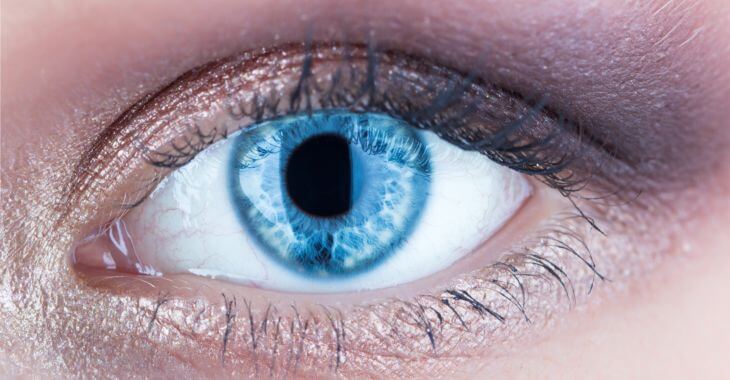Can Yeast Infection Cause Cramps? Understanding Causes, Symptoms, Prevention and Treatment

Yeast infections, caused by the overgrowth of Candida albicans—a type of fungus naturally found in the body—can lead to a range of uncomfortable symptoms, including itching, burning and abnormal discharge. But can yeast infection cause cramps or abdominal pain?
While yeast infections primarily affect the genital area in women, they can also occur in men and may cause symptoms such as irritation and redness. One common question that arises for women is whether a yeast infection causes abdominal pain or cramps.
In this article, we will explore the relationship between yeast infections and cramps, as well as consider the causes, symptoms, prevention and treatment options for yeast infections to relieve symptoms and promote overall vaginal health.
Can Yeast Infections Cause Cramps?
While yeast infections are typically associated with symptoms such as itching, burning and discharge, they are not known to directly cause cramps. However, it is essential to consider that the symptoms of yeast infections can sometimes mimic those of other vaginal infections or conditions.
Conditions such as bacterial vaginosis or urinary tract infections (UTIs) may cause pelvic discomfort or abdominal cramping but have other similar symptoms of a yeast infection. Therefore, if you experience cramps along with other symptoms of a yeast infection, it’s essential to have an accurate diagnosis.
Causes and Symptoms of Yeast Infections
Yeast infections occur when there is an imbalance in the natural microbiota of the vagina, leading to an overgrowth of Candida fungus. Several factors can contribute to the development of yeast infections, including:
- Antibiotic Use: Antibiotics can disrupt the balance of beneficial bacteria in the body, making it easier for yeast to proliferate and cause infection.
- Hormonal Changes: Fluctuations in hormone levels, such as those that occur during pregnancy, menstruation, or menopause, can increase the risk of yeast infections.
- Weakened Immune System: Conditions or medications that weaken the immune system, such as HIV/AIDS or corticosteroids, can make individuals more susceptible to yeast infections.
- Diabetes: Uncontrolled diabetes can lead to elevated blood sugar levels, providing an environment conducive to yeast overgrowth.
The common symptoms of yeast infections include:
- Itching and irritation in the vaginal area
- Burning sensation during urination or intercourse
- Abnormal vaginal discharge that may be thick, white, or cottage cheese-like
- Swelling and redness of the vulva
- Soreness and discomfort in the vaginal region
Can a yeast infection cause abdominal pain? While these infections are uncomfortable and painful, the discomfort is usually confined to the vaginal area.
Prevention and Treatment of Yeast Infections
While yeast infections are common, there are steps individuals can take to reduce their risk of developing them:
- Practice Good Hygiene: Maintain proper genital hygiene by washing the genital area with mild soap and water and avoiding douching, which can disrupt the vaginal microbiota.
- Wear Breathable Clothing: Choose loose-fitting, breathable cotton underwear and avoid tight-fitting clothing, which can trap moisture and create an environment conducive to yeast overgrowth.
- Avoid Irritants: Minimize exposure to potential irritants such as scented feminine products, harsh soaps and perfumed hygiene sprays, which can disrupt the natural balance of the vaginal environment.
- Limit Antibiotic Use: Use antibiotics only when prescribed by a healthcare provider and complete the full course of treatment to reduce the risk of antibiotic-induced yeast infections.
- Manage Blood Sugar Levels: Individuals with diabetes should work with their healthcare provider to manage blood sugar levels effectively, as uncontrolled diabetes can increase the risk of yeast infections.
When it comes to treating yeast infections, several options are available to relieve symptoms and promote healing:
- Antifungal Medications: Over-the-counter antifungal medications, such as miconazole (Monistat) or clotrimazole (Gyne-Lotrimin), are commonly used to treat yeast infections. These medications are available in various forms, including creams, suppositories and ointments, and work by eliminating the Candida fungus.
- Prescription Medications: In cases of recurrent or severe yeast infections, healthcare providers may prescribe oral antifungal medications, such as fluconazole (Diflucan), to help clear the infection more effectively.
- Home Remedies: Some individuals may find relief from yeast infection symptoms by using home remedies such as probiotics, yogurt or boric acid suppositories. However, it’s essential to consult with a healthcare provider before attempting home remedies to ensure safety and effectiveness.
- Avoiding Irritants: During treatment for yeast infections, it is essential to avoid potential irritants such as scented products, tight-fitting clothing and douching, which can exacerbate symptoms and delay healing.
While yeast infections are not known to directly cause cramps, they can lead to a range of uncomfortable symptoms that may mimic other vaginal conditions. If you experience itching, burning or abnormal discharge, it is essential to consult with a healthcare provider for accurate diagnosis.

By understanding the causes, symptoms, prevention strategies and treatment options for yeast infections, individuals can take proactive steps to promote vaginal health and reduce the risk of recurrent infections and regain comfort and confidence in their daily lives.
The information provided on this website, including text, graphics, images, and other materials, is intended solely for informational purposes and should not be used as a substitute for professional medical advice, diagnosis, or treatment.



)